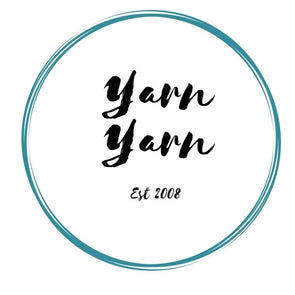Indigo dyed Khadi cotton yarns on the way! Ethical and sustainable yarn production.
Indigo dying and Khadi cotton yarn
Yarn Yarn are very excited. Our new handspun khadi cotton yarn has been indigo dyed and is on the way! We have been working closely with a group of women artisans in VERY rural India who are making indigo dyed handspun khadi cotton for us. Let us explain what it is and the processes involved...
Khadi cotton is a handmade cotton yarn. It is produced using the process of charkha spinning. No machines are used, just a lot of manpower! The production of this yarn is low but it gives employment to many poor families in India that we work with.
The cotton is grown in areas that strictly do not use pesticides so it is organic to some extent. We cannot call it pure organic legally because we do not have control over these areas, the farmers do.
We have had our Khadi cotton hand dyed using Indigo dyes, which I have to say are magical.
Indigo dying process.
Natural Indigo dyes come from southern parts of India. The state named 'Tamil Nadu' has a vast production of Indigo leaves. These leaves are dried under the sun and then put in cold water for a long time. Gradually over time there is extraction of some colours from the leaves which occurs in the water. The indigo layer is then extracted from the water and the layer becomes hard like a cake (see image below)

Natural indigo is the ideal blue dye to use on handmade textiles and on natural fibres. It may cost more than synthetic indigo, but the main cost of handmade items is time. Natural indigo is also essential for living history research, and for historic re-enactments. This may seem obvious, but if you want to use natural dyes, you need to use natural indigo rather than synthetic. Synthetic indigo is not a natural dye. Sometimes dyers may be unaware that they are in fact using synthetic indigo, as some shops don’t always make it clear what type of indigo they are selling.




Leave a comment